Common Hardwoods and Softwoods for Furniture
Here is a list of common hardwoods and softwoods used in the crafting of furniture. Do note a wood's heartwood is harder than its sapwood. Also, wood names can be misleading. For example, Swietena mahagony, South American mahogany and African mahogany are all marketed as mahogany but their properties can be quite different. So when you next purchase a wood furniture and the sales person tells you that it's made of teak, remember to ask whether he is referring to Brazilian teak, Rhodesian teak or Burmese teak (Genuine teak).
Hardwoods
Anigre
Black Cherry
Brazilian Rosewood
Bubinga
English Walnut
Hard Maple
Ipe
Lacewood
Makore
Softwoods
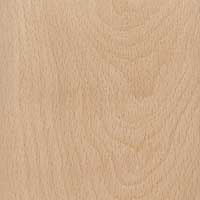
American Beech
Fairly fine-grained with a light orange to salmon colour. American Beech shows a distinct pore pattern. Beech is commonly used in lower-end solid wood furniture like stools and chairs.
Price Economical
Durability Non-durable and susceptible to insect attack
Hardness 1,300 lbf (5,780 N)
Scent None
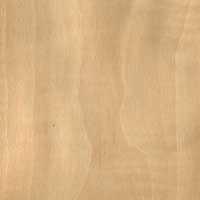
Anigre
Anigre, Anegre or Aniegre is cream to tan in colour with a pinkish tinge and found generally with straight grain, but sometimes wavy.
Price Moderate
Durability Non-durable and no resistance to insect attack
Hardness 930 lbf (4,160 N)
Scent Faint smell similar to cedar
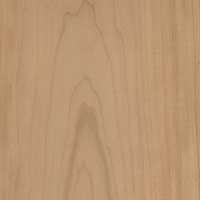
Black Cherry
The wood starts out a light pinkish brown and changes to a darker golden brown when exposed to sunlight. It ages well and is extensively used in cabinet making and solid furniture handles. Other uses include carvings, lamps, musical instruments, parquet floors and indoor panels.
Price Moderate
Durability Very durable and resistant to decay
Hardness 950 lbf (4,230 N)
Scent None
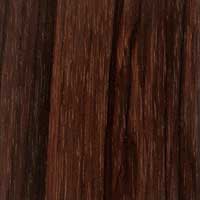
Brazilian Rosewood
It is a close-grained hardwood which comes in a beautiful dark chocolate to red-brown. This wood has a sweet smell, which persists over the years. It is hard to work upon, takes high polish and is good for making veneers and furniture.
Price Very expensive
Durability Very durable and also resistant to insect attack
Hardness 2,270 lbf (10,100 N)
Scent Sweet floral smell
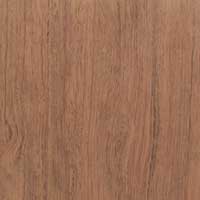
Bubinga
A handsome African species that is tough and heavy. Grain is interlocked and texture is fine; mottle and roey figure is fairly common in quartersawn boards while pommele, curl and quilt figures are less common but very dramatic in appearance when present.
Price Moderate
Durability Moderately durable to very durable. Resistant to termite and marine borer attack.
Hardness 2,610 lbf (11,610 N)
Scent May have an unpleasant scent when wet
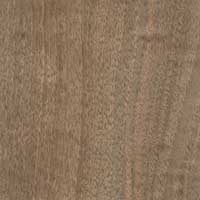
English Walnut
English Walnut is strong, hard and durable, without being excessively heavy. It resists shrinking and warping and can take all types of finishes very well. The wood takes and holds paints and stains exceptionally well and is readily polished.
Price Expensive
Durability Moderately durable in terms of decay resistance but susceptible to insect attack
Hardness 1,220 lbf (5,410 N)
Scent None
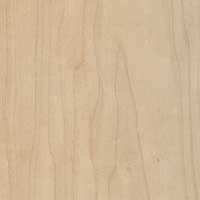
Hard Maple
Unlike most other hardwoods, the sapwood of Hard Maple lumber is most commonly used rather than its heartwood. Sapwood colour ranges from nearly white to a creamy color, while its heartwood is typically a darker reddish brown. With moderate shrinkage, maple machines well and is best used in flooring, fine furniture and wooden ware such as bowling alleys.
Price Economical
Durability Non-durable (as sapwood is used rather than heartwood)
Hardness 1,450 lbf (6,450 N)
Scent None
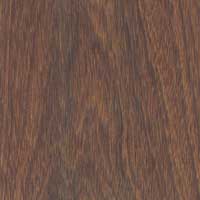
Ipe
Ipe's grain ranges from straight to very irregular. The wood is deep brown, extremely hard, durable and stable. Due to its hardness, Ipe is a difficult wood to work with.
Price Moderate
Durability Very durable with exceptional resistance to decay, rot, and insect attack
Hardness 3,680 lbf (16,370 N)
Scent None
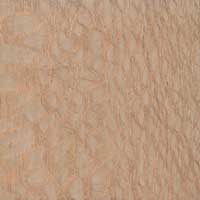
Lacewood
As its name suggests, Lacewood's wood figure resembles lace. It is reddish brown with grey or light brown rays, resulting in a lace pattern when quartersawn.
Price Expensive
Durability Non-durable and susceptible to insect attack
Hardness 891 lbf (3,963 N)
Scent None
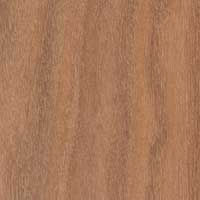
Makore
Makore wood ranges in colour from a deep red-brown to a pale pink. The sapwood is clearly demarcated and is much lighter in colour. It has a fine texture and mostly straight grain, although the grain is sometimes interlocked or wavy or has a broken stripe or mottle, which results in very interesting figures.
Price Moderate
Durability Very durable and resistant to insect attack
Hardness 1,110 lbf (4,940 N)
Scent None
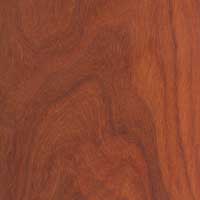
Padauk
The heartwood is vivid reddish orange when freshly cut, darkening to reddish brown over time. Its sapwood is cream-coloured. The grain is straight or interlocked with an oily and coarse texture.
Price Moderate
Durability Durable to very durable. Resistant to termites and other insects.
Hardness 1,970 lbf (8,760 N)
Scent Faint aromatic scent when unfinished

Poplar
The sapwood is creamy white and may be streaked, with the heartwood varying from pale yellowish brown to olive green. The green colour in the heartwood will tend to darken on exposure to light and turn brown. The wood has a medium to fine texture and is straight-grained.
Price Cheap
Durability Non-durable to moderately durable
Hardness 540 lbf (2,400 N)
Scent None

Purpleheart
Purpleheart has a creamy white or gray sapwood but like its name, the heartwood is a bright, striking purple when freshly cut, which darkens into a deeper purple with age. It has a medium to fine texture with a luster that ranges from medium to high. The grain is usually straight but can be wavy or irregular.
Price Moderate
Durability Very durable and resistant to most insect attacks
Hardness 2,390 lbf (10,630 N)
Scent None
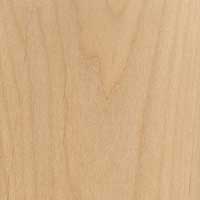
Red Alder
The softness of Alder makes it a popular carving wood. It is more suitable for indoor use as it is prone to rotting. Alder dries without much shrinkage and maintains dimensional integrity.
Price Cheap to economical
Durability Non-durable
Hardness 590 lbf (2,620 N)
Scent None
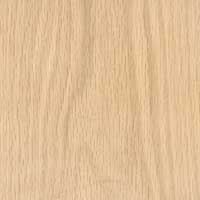
Red Oak
Red Oak is normally light to medium reddish-brown. A hard, open grain, heavy, tough and strong wood, it finishes well and resists moisture absorption. Red Oak is widely used and is good for furniture, trimming, boat framing, wooden desks and flooring.
Price Economical
Durability Slightly durable
Hardness 1,290 lbf (5,700 N)
Scent Distinct oak smell
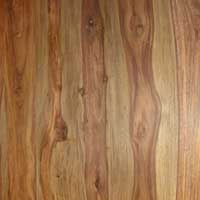
Sheesham
Sheesham, also known as Sissoo or Indian Rosewood, is a rich medium brown wood with deep grains that is very popular as a material for cabinets. It is a fast-growing hardwood and the functional furniture made from it can deal with everyday stresses and strains without losing its attractive appearance.
Price Very expensive
Durability Durable to very durable with good decay resistance
Hardness (estimated) 1,510 lbf (6,720 N)
Scent Slightly sweet floral smell
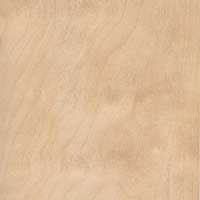
Silver Birch
Silver Birch is a hard, close-grained wood that is resistant to warping in changing climatic conditions. Most birch is straight-grained, although the straightness of the grain is dependent to some extent on the growing conditions of the individual tree.
Price Economical
Durability Non-durable and susceptible to insect attack
Hardness 1,210 lbf (5,360 N)
Scent None
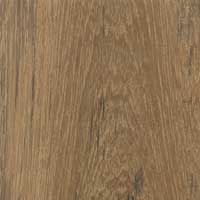
Teak
Teak is a hard and moisture-resistant wood. It resists warping, cracking and decay, and is used in fine furniture, paneling, doors, window framing and flooring.
Price Very expensive
Durability Extremely durable, resistant to termites and moderately resistant to marine borers and powder post beetles
Hardness 1,070 lbf (4,740 N)
Scent None
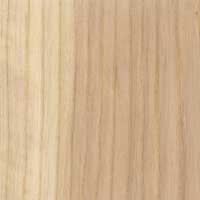
White Ash
White Ash wood is generally light in color, becoming a richer yellow or brown at the core. It is coarse but the grain is fairly straight.
Price Economical
Durability Non-durable and no resistance to insect attack
Hardness 1,320 lbf (5,870 N)
Scent None
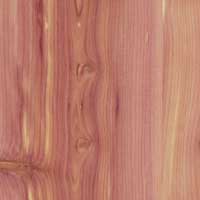
Aromatic Red Cedar
Aromatic Red Cedar is one of the lightest softwoods available commercially This sweet-smelling wood is reddish brown in colour, very easy to work with, uniform in texture and resistant to decay. It is extensively used in chest making, closet lining and outdoor furniture.
Price Moderate
Durability Very durable and resistant to insect attack
Hardness 900 lbf (4,000 N)
Scent Distinct scent that repels moths and other insects
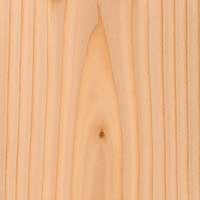
Douglas-fir
Douglas-fir is uniformly textured and has low resistance to decay. It is non-resinous, works easy and finishes well. Fir is used for making furniture, doors, frames, windows, plywood, veneer, general millwork and interior trim.
Price Moderate
Durability Moderately durable but susceptible to insect attack
Hardness 620 lbf (2,760 N)
Scent Resinous smell
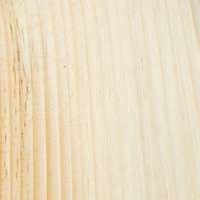
Eastern White Pine
Eastern White Pine has a uniform texture and is very easy to work with. Its colour tends to be creamy white to pale yellowish-white and will slowly mature to a deep tan color. It finishes well and resists shrinkage, swelling and warping. It is widely used in house construction, paneling, furniture making.
Price Economical
Durability Slightly to moderately durable
Hardness 380 lbf (1,690 N)
Scent Distinct smell
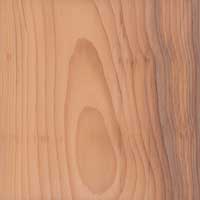
European Yew
The European Yew, otherwise known as English Yew or Common Yew, is tough, strong and resilient. Its tree trunks grow in a twisted manner, making the wood suitable for use in bent wood applications.
Price Moderate to slightly expensive
Durability Durable to very durable. Resistant to most insect attack.
Hardness (estimated) 1,470 lbf (6,540 N)
Scent None
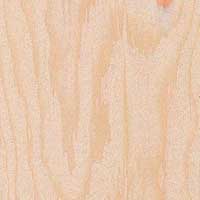
Western Hemlock
The wood is lightweight and machines well. It is uniformly textured and is mainly used for construction lumber, planks, doors, boards, paneling, sub flooring and crates.
Price Economical
Durability Low durability
Hardness 500 lbf (2,223 N)
Scent None
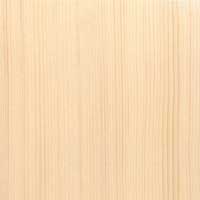
Norway Spruce
Norway Spruce or Common Spruce is a strong, light wood that finishes well and possesses moderate shrinkage. It is a good option for making masts and spars for ships, aircraft, crates, boxes, general millwork and ladders.
Price Economical
Durability Non-durable to slightly durable
Hardness 377 lbf (1,680 N)
Scent None

Redwood
Light, durable and easy to work with, Redwood also has natural resistance to decay. It is good for making outdoor furniture, fencing, interior finishing, veneering and paneling.
Price Moderate
Durability Moderately durable to very durable
Hardness 450 lbf (2,000 N)
Scent None
>> Hardwood and Softwood Furniture
>> Buying Furniture for your Home
>> Types of Leather Furniture
JOIN OUR MAILING LIST

